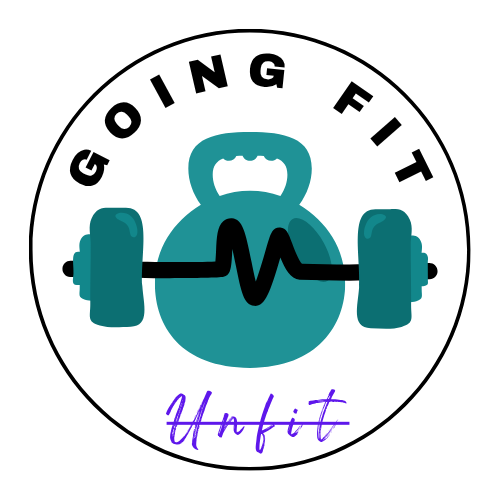Resilience is like a muscle that grows stronger the more you use it. Imagine it as a rubber band—when it’s stretched, it adapts to handle greater stress without snapping.
In life, we all face challenges, some big and others small, and how we respond to them often determines our success. Whether it’s dealing with work pressures, personal setbacks, or simply the rollercoaster of life, increasing resilience in adults is the key to bouncing back stronger each time.
Why Increasing Resilience in Adults Matters for Long-Term Success
Think of resilience as your emotional and mental safety net. It cushions you when life takes unexpected tumbles and helps you rise back up. Increasing resilience in adults isn’t about avoiding difficulties, but about embracing them and learning how to navigate through them with grace.
Resilience helps adults weather life’s storms. It’s what allows you to recover after facing adversity, manage stress effectively, and approach challenges with a sense of control. As we grow older, life throws more complex and often tougher challenges our way.
That’s why increasing resilience in adults becomes even more crucial. The stronger your resilience, the better prepared you are to take on the world’s obstacles, big or small.
How Positive Mindset Powers Adult Resilience Development
Imagine two people standing at the foot of a steep mountain. One sees the climb as an insurmountable obstacle, while the other views it as an exciting challenge. This difference in mindset is a key element in increasing resilience in adults. It’s not the mountain itself but how we perceive it that makes all the difference.
A positive mindset is foundational to resilience. When you approach life’s challenges with a growth-oriented mindset, setbacks become opportunities for learning rather than reasons to quit. This shift in thinking is like flipping a switch—turning “I can’t” into “I can” and “This is too hard” into “I will figure this out.”
To build resilience, start by acknowledging that setbacks are a natural part of life. Instead of seeing them as personal failures, view them as stepping stones to personal growth. Embracing a growth mindset means you’re more likely to bounce back from challenges, like a rubber ball that rebounds every time it hits the ground.
Building Emotional Agility: A Key to Enhancing Adult Resilience

Stress is part of life—it’s like the rain that falls in the garden of personal development. However, it’s how we respond to stress that makes all the difference. Increasing resilience in adults requires learning emotional agility— the ability to manage emotions in a healthy and flexible way when the going gets tough.
Emotional agility is not about suppressing emotions or pretending that everything is fine. It’s about recognizing your feelings, understanding them, and choosing how to respond. When you’re able to move through your emotions rather than being stuck in them, you become more resilient. Picture emotional agility as a dancer who moves gracefully through a challenging routine, adapting to every step without losing rhythm.
To develop emotional agility, try practices like mindfulness or journaling. These tools can help you process your emotions and prevent stress from building up, which ultimately increases resilience. Mindfulness teaches you to focus on the present moment without judgment, while journaling gives you an outlet for expressing and understanding your thoughts and emotions.
I’ve found that when my own resilience is being tested and emotions start to overwhelm me, having physical comfort tools makes all the difference. On particularly challenging days, wrapping myself in a weighted blanket feels like getting a reassuring hug, instantly calming my nervous system.
And there’s something almost magical about how a lavender essential oil diffuser can transform my space and my mindset after a stressful day. These simple tools have become essential parts of my resilience toolkit—they don’t just help me manage stress; they remind me I deserve to care for myself, especially when life gets tough.
How Social Connections Strengthen Resilience in Adult Life
Increasing resilience in adults isn’t something you have to do alone. Just like a tree with deep roots in the soil, having strong connections with others provides stability when life gets stormy. A reliable support system—whether it’s friends, family, or a mentor—acts as a pillar, offering strength when you’re feeling weak.
Humans are social creatures, and having people around you who listen, offer advice, and share experiences can help you develop resilience. Imagine walking through a dark tunnel. A good support system is like a flashlight, helping you see the way forward when things feel unclear. And just like any good flashlight, it shines brightest when you allow others to help light your path.
Building strong relationships requires effort. Make time for the people who bring positivity and encouragement into your life. Surround yourself with individuals who challenge you to grow and support you during tough times. Not only will this increase your resilience, but it will also help you build lasting connections that enrich your life.
Self-Compassion: The Foundation of Resilient Adults
We often think of resilience as an external strength, but it starts from within. Increasing resilience in adults requires developing self-compassion—the ability to treat yourself with the same kindness and understanding you’d offer to a friend in need. After all, how can you bounce back from life’s challenges if you’re constantly criticizing yourself?
Self-compassion is like a cozy blanket on a cold day—it offers comfort and warmth when you need it most. When you face setbacks, treat yourself with patience instead of judgment.
Acknowledge your mistakes, learn from them, and move forward without dwelling on the past. By practicing self-compassion, you’re giving yourself permission to grow, stumble, and rise again, knowing that it’s all part of the journey.
Goal-Setting Strategies to Build Greater Resilience in Adults

One of the most effective ways to increase resilience in adults is by setting and achieving small, realistic goals. Just like climbing a mountain, the journey is easier when you break it down into manageable steps. Instead of aiming for perfection, focus on progress. Each small success builds confidence and resilience, like bricks in the foundation of a solid building.
Start by setting short-term goals that are achievable and specific. Whether it’s learning a new skill, improving your fitness, or tackling a work project, accomplishing smaller tasks boosts your sense of achievement. Over time, these small victories will snowball into greater resilience, helping you face life’s bigger challenges with confidence.
Why Embracing Change Boosts Adult Resilience Skills
Life is always in flux, and resisting change is like trying to swim against a current. Increasing resilience in adults involves embracing change with open arms rather than fearing it. Change often brings growth, and flexibility is the key to adapting to new circumstances without losing your footing.
When faced with change, try to stay curious instead of anxious. Ask yourself, “What can I learn from this? How can I grow through this experience?” By adopting a mindset that views change as an opportunity, you can better adapt to life’s twists and turns.
Conclusion: Daily Practices for Increasing Resilience in Adult Life
Increasing resilience in adults is not a one-time fix; it’s a lifelong journey. Just like a tree grows stronger with every storm it faces, your resilience will deepen as you continue to face life’s challenges.
By cultivating emotional agility, building supportive relationships, practicing self-compassion, and setting achievable goals, you’ll transform into someone who not only survives life’s setbacks but thrives in the face of them.
Resilience isn’t about avoiding the storms of life—it’s about learning how to dance in the rain. So, embrace the challenges ahead, knowing that with each step, you are strengthening your ability to bounce back and grow, no matter what life throws your way.










This is great advice, thank you! Having good resilience definitely helps you live a better life and be a healthier you. I have anxiety so I have had to learn how to handle it better.
Hey, I’m so glad you found the advice helpful! Building strong resilience is such a key part of personal development and really supports better mental health—especially when managing anxiety. Keep practicing those strategies, and you’ll definitely see lasting growth and a healthier, more balanced life!
resilience is something that you always have to work towards, especially in today’s hellscape
Absolutely. It really is a constant practice—especially with everything going on in the world. Just taking it one day at a time and giving yourself grace can make a huge difference.